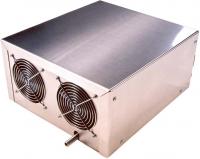|
|
||||||||||||||||||||||||||||||||||||||||||
|
Summer Newsletter Issue #3 Summer 2010 |
||||||||||||||||||||||||||||||||||||||||||
|
|
|
|
Usage |
Application |
How? |
|
Marine and RV Dehumidifier Usage
Galley, laundry, head, berth |
Protect your valuable investment and equipment. 40 - 50%RH Improve your personal comfort by removing that "caramel apple" sticky humidity from your environment. 60% RH Store your equipment such as sails, PFDs, electronics, bedding, towels, in a low humidity environment you create. 40 - 50% |
Reduces harmful levels of humidity that contribute to corrosion, rust,
mold and mildew that thrives in humid and damp environments.
Reduces condensation and dampness on cold walls and surfaces during mild weather by removing naturally occurring moisture. |
|
Control Humidity |
Kitchens, bathrooms, laundry room, living spaces 50 - 60% RH
If you have employed the use of extensive fine wood flooring, paneling, trim, cabinets and furniture in your boat or RVs interior, you will want to control the humidity. Wood absorbs and looses moisture. At a high humidity level wood absorbs moisture and expands and contouring may occur. At a low humidity woodwork may become dried out and contracts and cracking in seams may occur. 50% RH - 60% RH
Small crawlspaces, small basements, and cellars. 50 - 60% RH (Less than 1000 square feet) |
Reduces naturally occurring moisture and moisture generated from cooking, bathing, washing
Use your dehumidifier to keep your humidity levels between 50% RH and 60% RH. At levels lower than 50% woodwork may become dried out.
Reduces the humidity or dampness that permeates through the floor, walls, cracks, seams etc. |
|
Protect Your Valuable Investment and Equipment Please note: that their are other agents of deterioration that must be considered when storing your collections or equipment. These agents include visible light, ultraviolet radiation, temperature, dirt, etc. which may affect your environment. |
Storage and utility rooms for electronics, equipment, memorabilia, keepsakes, books, tapes, photos etc. see table below
Furniture, sails, PFDs, electronics, bedding, towels 40 - 50% RH
Construction trailers, Field Offices |
Reduces harmful levels of humidity that contribute to corrosion, rust, mold and mildew that thrives in humid and damp environments
Use your dehumidifier to Create a low humidity environment/room for storage
|
| Reduce Condensation |
Boat and RVs, campers, pop ups 50 - 60 % RH |
Reduces condensation and dampness on cold walls during mild weather by removing naturally occurring moisture. |
|
Improve your personal comfort
Improve your personal health
|
Campers, Pop Ups, RVís Mobile homes, Field Offices, Attics 60 % RH
Living spaces, cabins, basements, crawlspaces.
-Less than 1000 sq
feet |
Reduces naturally occurring moisture and moisture generated from cooking, bathing.
Prevent Condensation and dampness on cold walls
Some people are allergic to mold, mildew and bacteria, which thrive in damp, humid environments. By reducing the humidity in the air you help to prevent their growth. |
|
Restore Freshness |
Rooms, Cabins,
Campers, Living Space |
Musty odors are caused by mold and mildew growth. Inhibit their growth by reducing the moisture they need to thrive on. |
|
Relative Humidity Optimum Ranges for Various Materials as Recommended by the National Park Service for their Park's Museum Collection. Please note: that their are other agents of deterioration that must be considered when storing your collections or equipment. These agents include visible light, ultraviolet radiation, temperature, dirt, etc. which may affect your environment. This guide only addresses relative humidity levels as recommended by the NPS for their collections. |
Paintings..................................................................40% - 65% Paper ......................................................................45% - 55% Photographs/Film/Negatives ...................................30% - 40% Other organics (wood, leather, textiles, ivory).........45% - 60% Metals.....................................................................<35% |
For a complete mold prevention program go here. You'll find a Dehumidifier Program for the prevention of mold and mildew growth in your boat or RV.
 Model: DH-10
|
Discontinued: Please note that the McIntire Company no longer produces the DH-10 Dehumidifier. If you would like a dehumidifier similar to the DH-10 we recommend the Dry Pal manufactured by Mermaid Marine http://www.mmair.com/marine_division/dehumidifiers/dry_pal_dehumidifier
or the
CD30 Manufactured by EbacUSA http://www.ebacusa.com/cd30.htm
|
Copyright www.edehumidifier.com

 Dry
Pal
Dry
Pal CD30
CD30